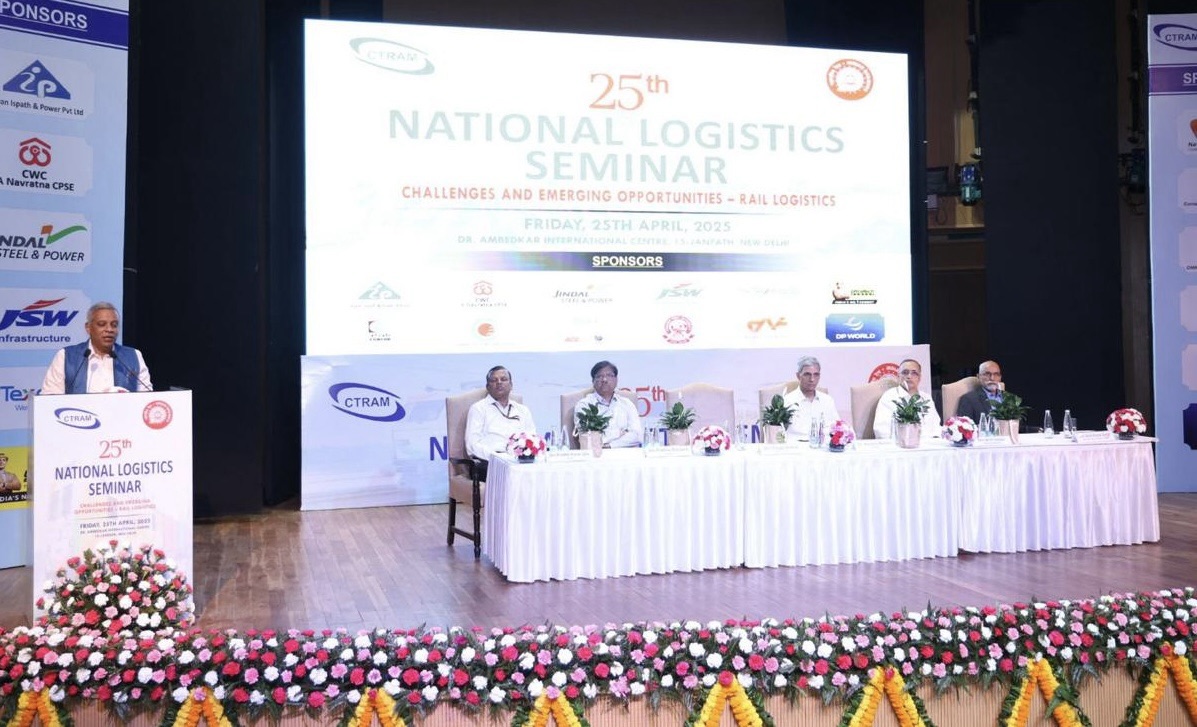CTRAM-National Logistics Seminar-2025
New Delhi: The Centre for Transportation Research and Management (#CTRAM) hosted its flagship “National Logistics Seminar-2025” at Ambedkar Bhawan, New Delhi, bringing together leaders from government, and industry to discuss the evolving landscape of #logistics in India with special focus on #Cement, #Automobile and #Cargo Aggregation logistics and scope for increasing the rail co-efficient.
The event was inaugurated by Chief Guest Hitendra Malhotra, Member Operations and Business Development (#MOBD), Railway Board, Sanjay Swarup, #CMD/CONCOR, and senior officials from CTRAM. The seminar opened with addresses from CTRAM leadership and key dignitaries.
In the opening remarks, speakers highlighted the declining share of rail in logistics, addressing various challenges related to geopolitical disruptions, a dynamic business environment, and changing consumer preferences. Opportunities to increase rail’s market share through digitalization, innovation, and a growing emphasis on sustainability were also examined.
Key initiatives identified as pivotal in enhancing rail’s role and promoting multimodal integration included the establishment of dedicated freight corridors, substantial investments aimed at improving railway infrastructure, and the introduction of over one hundred thousand new wagons.
The first session focused on cement logistics, featuring discussions on future trends and innovations in the field. Industry leaders from companies such as CLO, Ultratech Cement, CLO, Adani Cement, and MD, CWC explored the essential role of warehousing in efficient cement logistics, as well as strategies for achieving sustainable cement logistics and reducing the sector’s carbon footprint.
With a current capacity of 600 MTPA and operating at 65% capacity, the cement sector is poised for growing annual demand, driven by significant government capital expenditure.
Increasing the share of rail transport from the current 10% to 25%, particularly in bulk cement transport, will be crucial for achieving cost efficiencies and lowering emissions.
Various measures were discussed to support these objectives, including simplification of existing policies, consumer consultations, the adoption of LTTC contracts, and improvements in wagon design.
The second session on Automobile Logistics (representatives from Maruti Suzuki, SIAM, APL Logistics VASCOR, GATX India), focussed on infrastructure development and investment strategies, sustainable eco-friendly, first-mile & last-mile connectivity and need for innovative wagon designs in the sector.
The discussion ranged from progressively increasing share of rail in automobile logistics from 5% to 10% in ten years to new design of carriers in order to accommodate increasing height of SUV’s which were creating challenges in double stacking. Increased use of dedicated freight corridors and promotion of dedicated auto hubs, cargo security through effective locking and ensuring availability of NMG were few of the solutions discussed.
The last session was based on Cargo Aggregation and BOG. It focussed on cargo aggregation strategies aimed at expanding Indian Railways’ commodity basket (Amazon, Nestle, AVG Logistics, ACTO). The 2021-22 freight ecosystem had BOG share of 40% but rail coefficient translated only to 6% increasing only to 8% in 2024-25.
Industry leaders from Amazon India, Nestle and logistics experts led the discussion on the importance of reliability of operations through assurance in transit times, rationalized rates and multimodal logistics planning that aggregation has the potential to address.
Technology had been credited to be a key enabler by facilitating online payments of parcels, systematic cargo freight management, warehousing facilities, etc. The concept of bimodal technology to improve multimodal integration was also discussed.
The event highlighted the importance of #policy-coordination, #infrastructure development, #digitisation, and private sector collaboration to improve #logistics efficiency, reduce carbon footprints, and improve rail’s share in bulk and BOG transportation.


